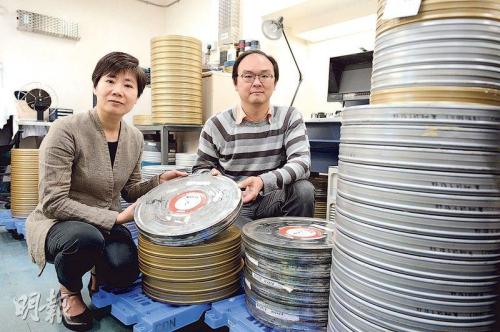Hong Kong will digitize Bruce Lee and other early films, which are expected to be shown in 2020 at the earliest.
BEIJING, April 28 (Xinhua) According to Hong Kong’s Ming Pao, since the beginning of the last century, Hong Kong has produced more than 10,000 films, of which 4,000 have become the collections of the Hong Kong Film Archive. In 2019, the Hong Kong Budget allocated HK$ 20 million, which enabled the Film Archive to digitize an additional 30 films each year. The museum revealed that 10 of them will be digitized in the first year after the grant, including Bruce Lee’s early films and Huang Feihong’s film series, which are expected to be released to the public as soon as 2020-2021.

Yang Kexin (left), director of the Hong Kong Film Archive, said that he has been collecting film from different sources, and the collection now covers 4,000 films. . Image source: Hong Kong Ming Pao/photo by Zhong Linzhi
Digital movies contain martial arts, detective, horror and other themes.
Yang Kexin, director of the Film Archive, said that the digitized films mainly came from the 1950s and 1960s, and most of them had only one copy or negative, hoping that digitization could preserve these orphan copies.
In 1950s and 1960s, Hong Kong’s film industry flourished. In the first year after the film archive was funded, many digital films were produced during this period. Ten films included Bruce Lee’s early films, Kwan Tak-hing’s Huang Feihong series, Chen Baozhu’s "Jane Bond Film" and "Ghost Talented Director" Gongliang Yang’s horror films.
Yang Kexin said that most of the films digitized after the grant were orphans, and many of them were never shown after being collected. "If you get a copy, you will try not to use it, because every time the film is broadcast by the projector, it will inevitably be worn out.".
Yang Kexin said that he has been collecting films from different sources. In recent years, the most important batch came from a San Francisco theater, which was Hong Kong film before the 1930s and 1940s, and it was a very important cultural heritage.
She said that among the 4,000 films, about 170 films have digital versions. In the past, 20 films could be digitized every year. After funding, more manpower and resources can be increased, and 30 more films can be made every year. "The goal is that 1/10 of the collections will have digital versions in five years."
Hire young technicians to inherit the film restoration technology
The film should be preserved, and the technology of repairing film and film repair should also be passed on. Before the film is digitized, it is necessary to check whether the film is damaged. Yang Kexin said that film repair is a professional technology. At present, several technicians in their twenties and thirties joined the museum two or three years ago, and some of them were "laymen". Only after they joined the museum did they learn from Master to check and repair damaged films.
After the film is digitized, it may need to be digitally restored to improve the quality of sound and pictures. Yang Kexin said that unlike commercial restoration, the restoration in the museum is based on the principle of restoration, "it will not be better than the released version of that year".
Yang Kexin said that the film archive will study whether it needs to be expanded, but it is a long-term plan. "We need to consider whether more people and more places are needed to place the collections, but this needs to be linked to the growth of the collections." The space of the data library is limited, so it is not necessary to expand the scope of the museum. We can also find warehouses outside the museum to store the collections.